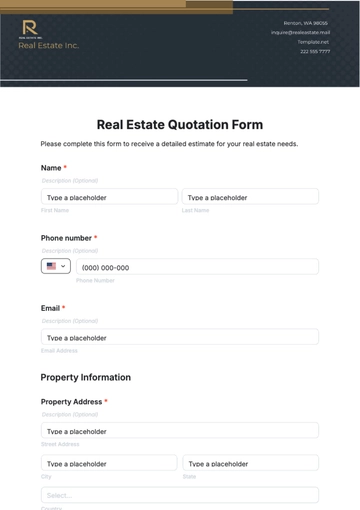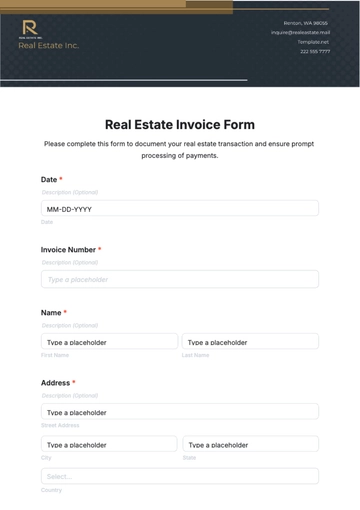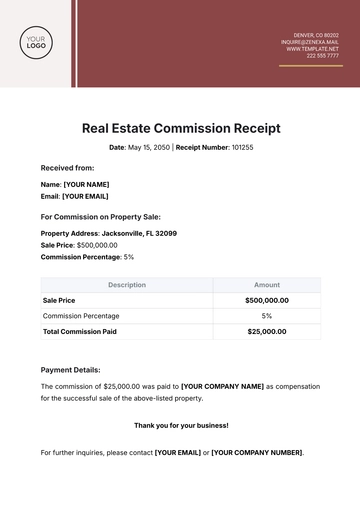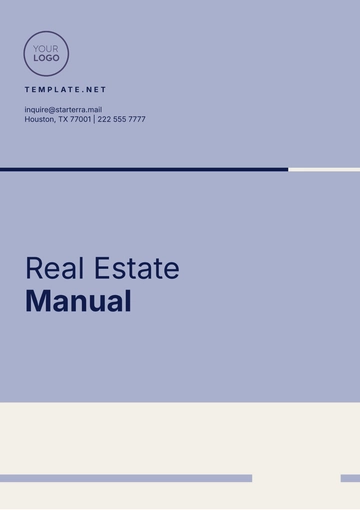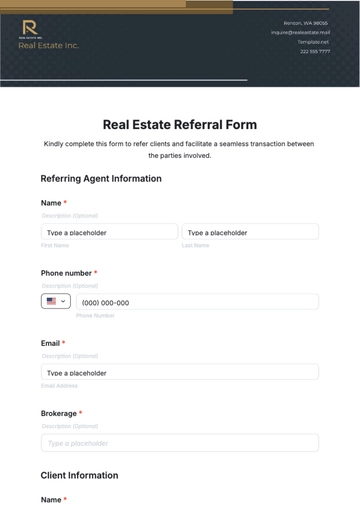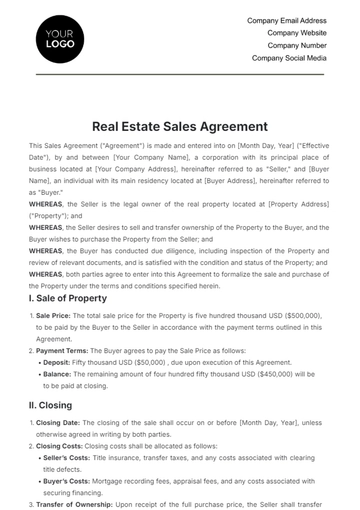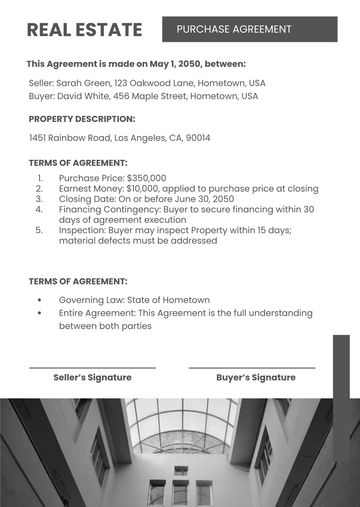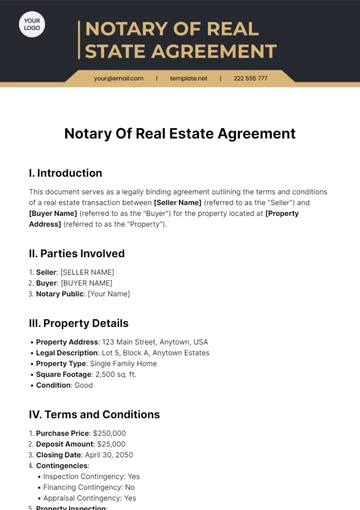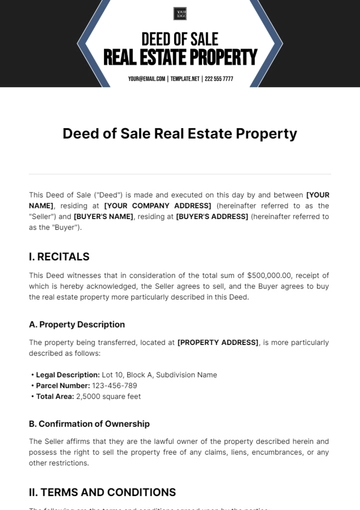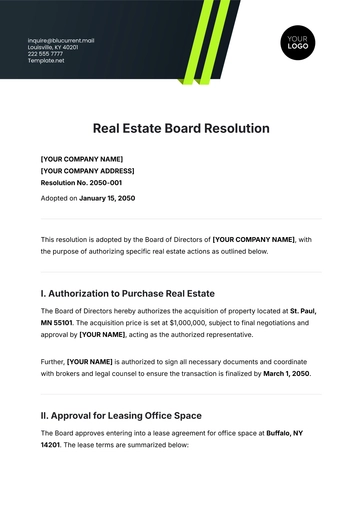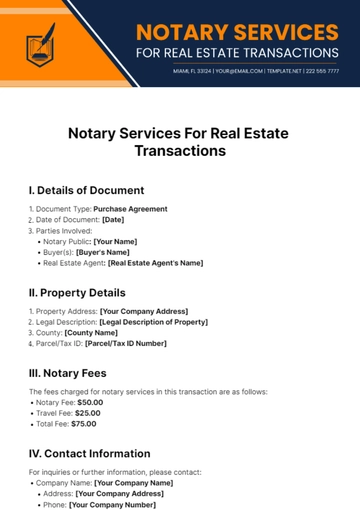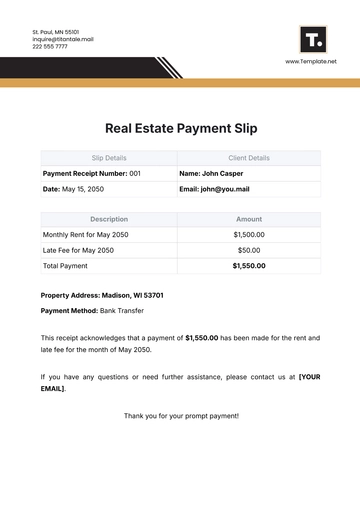Free Real Estate Strategic Legal Planning Guide
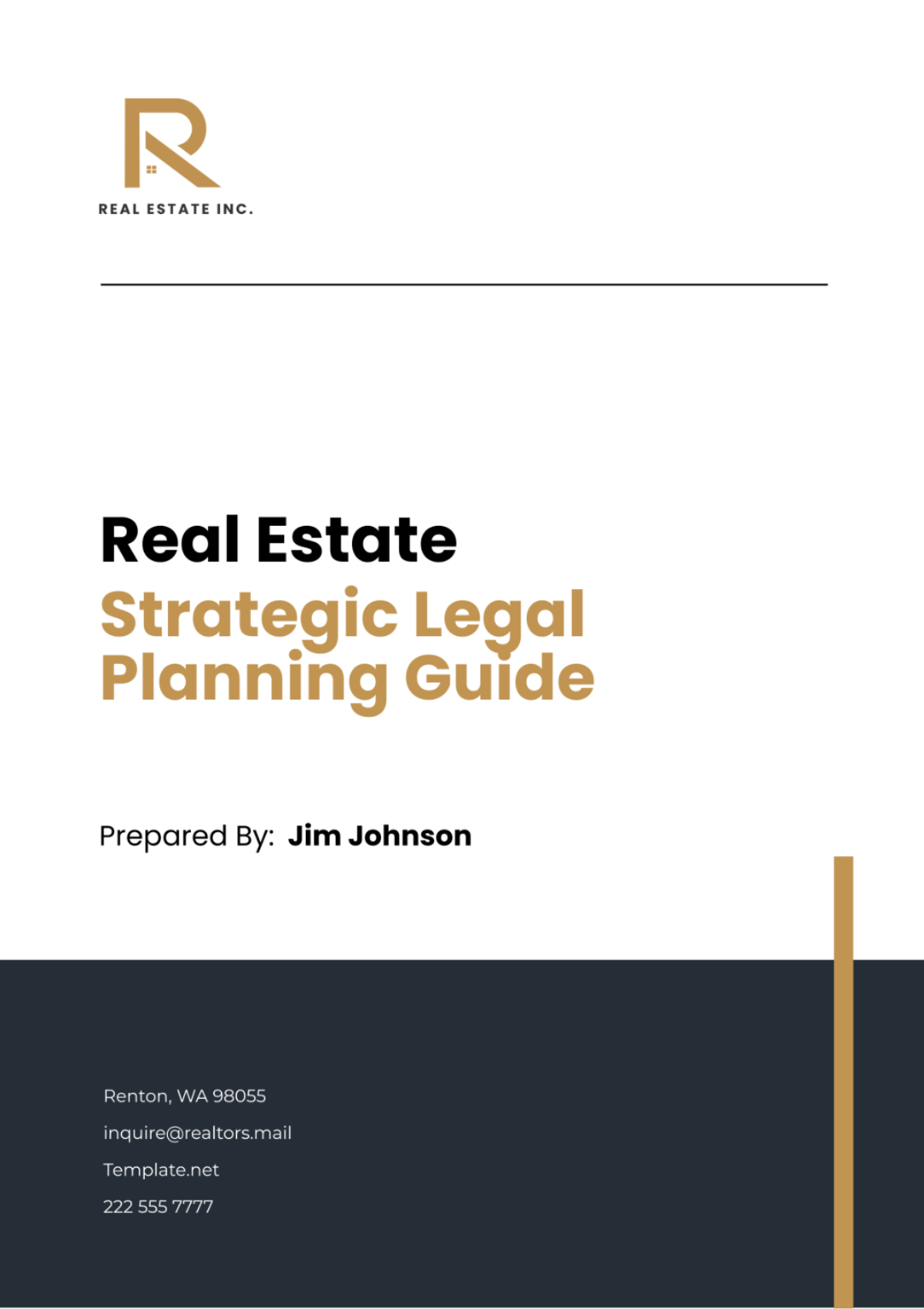
I. Introduction
A. Purpose of the Guide
The purpose of this guide are:
Comprehensive Understanding: This guide aims to provide a comprehensive understanding of the legal aspects of real estate. It covers everything from property rights to contracts, zoning laws, and landlord-tenant laws.
Strategic Legal Planning: The guide serves as a roadmap for strategic legal planning in real estate transactions. It outlines the steps to identify legal objectives, assess legal risks, and develop a risk management plan.
Legal Reference: This guide is designed to be a go-to reference for handling legal issues in real estate. It provides practical advice and resources to help navigate the complex legal landscape of real estate.
Compliance Assurance: The guide ensures that all real estate transactions are compliant with relevant laws and regulations, thereby minimizing legal risks.
Risk Minimization: The guide aims to minimize legal risks associated with real estate transactions by providing strategic legal planning and risk management advice.
B. Scope of the Guide
The scope of this guide is broad yet focused:
Broad Coverage: This guide covers the legal aspects of buying, selling, and managing real estate. It provides a comprehensive overview of real estate law, including property rights, contracts, zoning laws, and landlord-tenant laws.
Focused Approach: While the guide covers a broad range of topics, it maintains a focused approach on strategic legal planning. It provides detailed steps for setting legal objectives, identifying legal risks, and developing a risk management plan.
Practical Advice: The guide provides practical advice and resources for handling legal issues in real estate. It includes case studies, best practices, and resources for further reading.
Legal Disclaimer: While this guide provides comprehensive information and advice on real estate law, it does not constitute legal advice. Users should consult with a legal professional for specific legal advice.
C. How to Use the Guide
This guide is designed to be user-friendly and easy to navigate:
Starting Point: Users can use this guide as a starting point for understanding real estate law. It provides a comprehensive overview of the legal aspects of real estate.
Reference Tool: Users can refer to specific sections of the guide as needed. Each section is designed to stand alone, making it easy to find relevant information quickly.
Legal Consultation: While this guide provides a wealth of information, it is not a substitute for legal advice. Users should consult with a legal professional for specific legal advice.
Continuous Learning: Real estate law is constantly evolving. Users should keep this guide updated with the latest legal developments to ensure they have the most accurate and up-to-date information.
D. Target Audience
This guide is intended for:
Real Estate Professionals: This includes real estate agents, brokers, property managers, and anyone else involved in real estate transactions within the company.
Legal Professionals: This includes in-house counsel, paralegals, and other legal professionals who need to understand the legal aspects of real estate transactions.
Company Leadership: This includes executives and managers who need to understand the legal risks and considerations associated with real estate transactions.
Employees: All employees of the company who are involved in real estate transactions or need to understand the legal aspects of real estate.
II. Understanding Real Estate Law
A. Basic Concepts
Understanding the basic concepts of real estate law is the first step towards strategic legal planning:
Property Rights: Property rights are the legal rights associated with property ownership. They include:
1.1. Right to Use: The owner has the right to use the property within the confines of the law. This means they can live on the property, rent it out, or use it for legal business purposes.
1.2. Right to Exclude: The owner can prevent others from trespassing or using the property without permission. This means they can put up fences or signs, and take legal action against trespassers.
1.3. Right to Transfer: The owner can sell, rent, or otherwise transfer the property or their rights to the property to someone else. This includes selling the property outright, leasing it, or transferring it to heirs.
Contracts: Contracts play a vital role in real estate transactions. They outline the terms and conditions of the transaction, including:
2.1. Price: The contract specifies the agreed-upon price for the property. This is usually determined through negotiation between the buyer and seller.
2.2. Closing Date: The contract sets a date for when the transaction will be finalized. This is typically when the title is transferred and the money is exchanged.
2.3. Contingencies: The contract may include contingencies, such as the buyer securing financing or the property passing an inspection. These conditions must be met for the transaction to proceed.
Zoning Laws: Zoning laws regulate the use of property in specific areas. They can affect everything from the type of buildings that can be constructed to the size and height of those buildings. Key aspects include:
3.1. Land Use: Zoning laws dictate how land can be used, such as for residential, commercial, or industrial purposes. These laws can significantly impact the value and potential uses of a property.
3.2. Building Regulations: Zoning laws may set restrictions on building size, height, and placement on a lot. These regulations can affect the design and feasibility of development projects.
3.3. Special Use Permits: In some cases, property owners can apply for special use permits to use their property in a way not typically allowed by zoning laws. These permits can provide flexibility, but obtaining them can be a complex and uncertain process.
Landlord-Tenant Laws: Landlord-tenant laws govern the relationship between landlords and tenants. They outline the rights and responsibilities of both parties and provide protections for both landlords and tenants. Important elements include:
4.1. Lease Agreements: These contracts between landlords and tenants outline the terms of the rental arrangement. They specify the rent amount, lease duration, and rules for the property.
4.2. Tenant Rights: Tenants have certain rights, such as the right to a habitable living environment and the right to privacy. Landlords must respect these rights and can face legal consequences for violations.
4.3. Landlord Responsibilities: Landlords have certain responsibilities, such as maintaining the property and making necessary repairs. Failure to fulfill these responsibilities can lead to legal disputes.
Real Estate Financing: Real estate financing involves the legal aspects of financing real estate purchases. It includes everything from mortgages to deeds of trust and promissory notes. Key components include:
5.1. Mortgages: A mortgage is a loan used to purchase real estate. The property itself serves as collateral for the loan. Understanding the terms of a mortgage, including the interest rate and repayment schedule, is crucial for any real estate buyer.
5.2. Deeds of Trust: In some states, a deed of trust is used instead of a mortgage. The property is transferred to a trustee until the loan is paid off. This can provide additional protections for the lender.
5.3. Promissory Notes: This is a written promise to repay a certain amount of money under specific terms. In the context of real estate, a promissory note is often used in conjunction with a mortgage or deed of trust.
B. Common Legal Issues in Real Estate
Real estate transactions can involve a variety of legal issues. Understanding these issues can help prevent legal disputes and ensure a smooth transaction:
Disputes over Property Rights: Disputes over property rights can arise in a variety of situations, such as:
1.1. Boundary Disputes: These occur when neighboring property owners disagree over where one property ends and the other begins. These disputes can be complex and require a detailed understanding of property law and surveying practices.
1.2. Easement Disputes: These involve disagreements over the right to use another person’s property for a specific purpose, like a driveway or path. Easement disputes can affect a property owner’s ability to fully use and enjoy their property.
1.3. Adverse Possession: This is a legal doctrine that allows a person who possesses someone else’s land for an extended period of time to claim legal ownership. Adverse possession cases can be complex and require a thorough understanding of state laws and court precedents.
Contract Disputes: Contract disputes can arise when one party fails to fulfill their obligations under the contract. This can include:
2.1. Failure to Disclose: Sellers are typically required to disclose certain information about the property. Failure to do so can lead to legal disputes. Buyers rely on these disclosures to make informed decisions, and undisclosed issues can result in unexpected costs and complications.
2.2. Breach of Contract: If either the buyer or seller fails to fulfill their obligations under the contract, it may constitute a breach of contract. Breaches can result in financial losses and can lead to the termination of the contract.
Zoning Disputes: Zoning disputes can arise when a property owner wants to use their property in a way that is not permitted by the local zoning laws. This can include:
3.1. Land Use Disputes: These occur when a property owner wants to use their property in a way that is not allowed by the zoning laws. Land use disputes can delay or derail development projects and can result in legal and financial challenges.
3.2. Building Permit Disputes: These occur when a property owner is denied a building permit. Building permits are often required for construction and renovation projects, and disputes can arise over the interpretation of zoning laws and building codes.
3.3. Variance Issues: A variance allows a property owner to use their property in a way that deviates from the zoning laws. Disputes can arise if a variance is denied or if neighbors challenge a granted variance.
Landlord-Tenant Disputes: Landlord-tenant disputes can arise over a variety of issues, including:
4.1. Rent Issues: Disputes can arise if the tenant fails to pay rent on time or if the landlord attempts to raise the rent beyond what is allowed by law.
4.2. Security Deposit Disputes: These occur when the landlord deducts from the security deposit for damages or cleaning fees that the tenant disputes.
4.3. Eviction Issues: Disputes can arise when a landlord attempts to evict a tenant. The landlord must follow the legal process for eviction, and the tenant may have defenses to eviction.
III. Strategic Legal Planning
A. Setting Legal Objectives
Setting clear and measurable legal objectives is the first step in strategic legal planning. These objectives guide the planning process and provide a benchmark for measuring success. They should align with the overall goals of the real estate transaction and should be specific, measurable, achievable, relevant, and time-bound (SMART).
Compliance: Ensure all real estate transactions comply with local, state, and federal laws. This includes zoning laws, landlord-tenant laws, and contract laws. Compliance is not just about avoiding legal trouble - it’s about building a reputation for integrity and fairness in the marketplace. This involves:
1.1. Understanding and adhering to all relevant laws and regulations: This means staying up-to-date with the latest changes in real estate law and ensuring that all transactions are conducted in accordance with these laws.
1.2. Regularly reviewing and updating company policies and procedures to ensure ongoing compliance: This includes conducting regular audits to identify any areas of non-compliance and taking corrective action as necessary.
1.3. Training staff on legal requirements and how to comply with them: This involves providing regular training and resources to help staff understand their legal responsibilities and how to fulfill them.
Risk Management: Identify and mitigate legal risks associated with real estate transactions. This could involve conducting a thorough due diligence process or obtaining adequate insurance coverage. Risk management is about anticipating potential problems and putting measures in place to avoid or minimize them. This includes:
2.1. Identifying potential legal risks in each real estate transaction: This involves conducting a thorough risk assessment at the outset of each transaction to identify any potential legal issues or risks.
2.2. Developing and implementing strategies to mitigate these risks: This could involve revising contracts to address potential issues, obtaining insurance to cover potential liabilities, or implementing new policies and procedures to prevent future risks.
2.3. Regularly reviewing and updating the risk management plan to address new risks: As the legal landscape changes, so too will the risks associated with real estate transactions. Regularly reviewing and updating the risk management plan will ensure that it remains effective in mitigating these risks.
Dispute Resolution: Develop strategies for resolving potential legal disputes. This could involve setting up mediation or arbitration procedures, or drafting contracts with clear dispute resolution clauses. Effective dispute resolution can save time, money, and stress, and can help maintain positive business relationships. This involves:
3.1. Establishing clear procedures for handling disputes: This includes setting up internal dispute resolution procedures, such as mediation or arbitration, and ensuring that all staff are aware of these procedures.
3.2. Training staff on these procedures and how to resolve disputes effectively: This involves providing training and resources to help staff understand how to handle disputes and reach fair and reasonable resolutions.
3.3. Regularly reviewing and updating dispute resolution procedures to ensure they remain effective: As the company grows and changes, so too will its dispute resolution needs. Regularly reviewing and updating these procedures will ensure that they continue to meet these needs.
Efficiency: Streamline legal processes to make real estate transactions smoother and more efficient. This could involve using technology to automate certain tasks, or improving communication to reduce misunderstandings and errors. This includes:
4.1. Implementing technology solutions: This could involve using legal technology tools to automate routine tasks, streamline document management, or improve communication and collaboration.
4.2. Improving communication: This involves ensuring that all parties involved in a transaction have clear, accurate, and timely information. This can help prevent misunderstandings and errors that could lead to legal issues.
4.3. Continuously improving processes: This involves regularly reviewing and updating legal processes to make them more efficient and effective.
Education: Educate employees about legal issues in real estate. This can help prevent legal problems and ensure that everyone in the organization understands their legal responsibilities. This includes:
5.1. Providing regular training and resources: This involves providing regular training sessions, resources, and updates on real estate law to all employees.
5.2. Creating a culture of compliance: This involves promoting a culture where compliance with laws and regulations is valued and rewarded.
5.3. Encouraging continuous learning: This involves encouraging employees to continuously improve their legal knowledge and skills, and providing opportunities for them to do so.
Adaptability: Stay adaptable to changes in real estate law and market conditions. This could involve regularly reviewing and updating your legal strategies and plans. This includes:
6.1. Staying informed about changes in real estate law and market conditions: This involves regularly reviewing legal news and updates, attending industry events, and staying informed about changes in the real estate market.
6.2. Being flexible and responsive to change: This involves being willing to change your legal strategies and plans in response to changes in the law or market conditions.
6.3. Planning for the future: This involves anticipating future changes in real estate law and market conditions, and planning your legal strategies accordingly.
Sustainability: Consider the environmental and social impacts of your real estate activities, and aim to make them as sustainable as possible. This could involve complying with environmental laws, implementing green building practices, or engaging with the local community. This includes:
7.1. Complying with environmental laws and regulations: This involves understanding and complying with all relevant environmental laws and regulations, such as those relating to waste disposal, emissions, and energy use.
7.2. Implementing sustainable practices: This involves implementing sustainable practices in your real estate activities, such as using energy-efficient building materials, implementing water-saving measures, and reducing waste.
7.3. Engaging with the local community: This involves engaging with the local community to understand their needs and concerns, and working to address these in your real estate activities.
B. Identifying Legal Risks
Identifying potential legal risks is a crucial part of strategic legal planning. These risks could arise from various sources, such as contractual disputes, property rights issues, or regulatory compliance. Here are some steps to identify legal risks:
Conduct a Legal Audit: Review past and current real estate transactions to identify areas of legal risk. This could involve reviewing contracts, property titles, and regulatory filings. A legal audit can help you spot patterns, identify weaknesses, and take proactive steps to prevent future legal problems. This includes:
1.1. Reviewing all documents and records related to past and current real estate transactions: This involves a thorough review of all contracts, agreements, and other legal documents related to your real estate transactions.
1.2. Identifying any areas of non-compliance or potential legal risk: This involves identifying any areas where your company may not be fully compliant with relevant laws and regulations, or where there may be potential for legal disputes or other issues.
1.3. Making recommendations for addressing these risks: Based on the findings of the audit, you should make recommendations for how to address any identified risks. This could involve revising contracts, implementing new policies, or providing additional training for staff.
Consult with Legal Experts: Engage with lawyers, real estate experts, and other professionals to gain insights into potential legal risks. These experts can provide valuable advice based on their experience and expertise, and can help you see potential issues that you might have missed. This includes:
2.1. Regular meetings with legal experts to discuss potential risks: Regular consultations with legal experts can help you stay informed about potential legal risks and get advice on how to mitigate them.
2.2. Seeking advice from experts on how to mitigate identified risks: Legal experts can provide valuable advice on how to mitigate the risks identified in your legal audit. This could involve revising contracts, implementing new policies, or taking other steps to reduce your legal risk.
2.3. Incorporating this expert advice into the strategic legal planning process: The advice and insights you gain from legal experts should be incorporated into your strategic legal planning process. This will help ensure that your legal strategies are informed by expert knowledge and advice.
Stay Updated with Legal Developments: Keep abreast of changes in real estate laws and regulations that could impact your transactions. This could involve subscribing to legal newsletters, attending industry events, or consulting with a legal advisor. Staying updated with legal developments can help you adapt your strategies and plans as needed, and can ensure that you’re always in compliance with the latest laws and regulations. This includes:
3.1. Regularly reviewing legal news and updates: Stay informed about changes in real estate law by regularly reviewing legal news and updates. This can help you stay ahead of changes and adapt your legal strategies accordingly.
3.2. Attending legal training and workshops: Attend legal training sessions and workshops to deepen your understanding of real estate law and stay updated on the latest developments.
3.3. Updating company policies and procedures to reflect any changes in the law: If there are changes in real estate law that affect your business, update your company policies and procedures to reflect these changes. This will help ensure that your company remains compliant with the law.
Analyze Market Trends: Monitor trends in the real estate market that could pose legal risks. This could involve changes in property values, shifts in supply and demand, or new developments in real estate technology. Understanding market trends can help you anticipate potential legal issues and take steps to mitigate them. This includes:
4.1. Monitoring changes in property values: Changes in property values can affect the profitability of your real estate investments and could potentially lead to legal disputes. Monitor these changes closely and adjust your strategies as needed.
4.2. Keeping an eye on shifts in supply and demand: Shifts in supply and demand can affect the real estate market and could potentially lead to legal issues. Stay informed about these shifts and adjust your strategies accordingly.
4.3. Staying updated on new developments in real estate technology: New technologies can bring new legal challenges. Stay updated on these developments and consider how they might affect your legal strategies.
Assess Internal Processes: Review your internal processes and procedures to identify potential areas of legal risk. This could involve looking at how contracts are drafted, how disputes are handled, or how compliance is monitored. Assessing your internal processes can help you spot inefficiencies or vulnerabilities that could lead to legal problems. This includes:
5.1. Reviewing how contracts are drafted: The way contracts are drafted can have a big impact on your legal risk. Review your contract drafting processes and look for ways to reduce risk.
5.2. Looking at how disputes are handled: How your company handles disputes can also affect your legal risk. Review your dispute resolution processes and look for ways to resolve disputes more effectively.
5.3. Checking how compliance is monitored: Effective compliance monitoring can help prevent legal problems. Review your compliance monitoring processes and look for ways to improve them.
Evaluate Partnerships: Evaluate your relationships with partners, suppliers, and other third parties to identify potential legal risks. This could involve reviewing partnership agreements, assessing the performance of suppliers, or checking the financial stability of third parties. Evaluating your partnerships can help you manage risks associated with third parties and ensure that your relationships are legally sound. This includes:
6.1. Reviewing partnership agreements: Review your partnership agreements to identify any potential legal risks. This could involve checking for unclear or ambiguous terms, or terms that could potentially lead to disputes.
6.2. Assessing the performance of suppliers: Assess the performance of your suppliers to identify any potential legal risks. This could involve checking for consistent late deliveries, poor quality products, or other issues that could potentially lead to legal disputes.
6.3. Checking the financial stability of third parties: Check the financial stability of your partners, suppliers, and other third parties to identify any potential legal risks. This could involve reviewing financial statements, credit reports, or other financial information.
Monitor Regulatory Environment: Keep an eye on the regulatory environment in which you operate. Changes in laws or regulations can pose significant legal risks, and you need to be prepared to adapt your strategies and plans accordingly. Monitoring the regulatory environment can help you stay ahead of changes and ensure that you’re always in compliance. This includes:
7.1. Staying informed about changes in real estate law and regulations: This involves regularly reviewing legal news and updates, attending industry events, and staying informed about changes in the real estate market.
7.2. Being flexible and responsive to change: This involves being willing to change your legal strategies and plans in response to changes in the law or market conditions.
7.3. Planning for the future: This involves anticipating future changes in real estate law and market conditions, and planning your legal strategies accordingly.
Identify Potential Disputes: Identify potential areas of dispute in your real estate transactions. This could involve issues with contracts, property rights, or landlord-tenant relationships. Identifying potential disputes can help you take proactive steps to resolve them before they escalate. This includes:
8.1. Reviewing all contracts and agreements: This involves a thorough review of all contracts and agreements related to your real estate transactions to identify any terms or conditions that could potentially lead to a dispute.
8.2. Conducting a thorough due diligence process: This involves conducting a thorough investigation of all aspects of the real estate transaction to identify any potential issues or risks that could lead to a dispute.
8.3. Consulting with legal experts: This involves consulting with legal experts to gain insights into potential areas of dispute and how to resolve them.
IV. Implementing the Legal Plan
Implementing the legal plan is a critical step in strategic legal planning. It involves putting the strategies and procedures developed during the planning process into action. The effectiveness of the legal plan largely depends on how well it is implemented. The following table outlines some key aspects of implementing the legal plan:
Key Aspect | Description | Responsible Party |
|---|---|---|
Staff Training | This involves providing training to staff on the legal aspects of real estate transactions, the company’s internal legal procedures, and the legal objectives and strategies outlined in the plan. | Human Resources / Legal Department |
Policy Implementation | This involves implementing the policies and procedures developed during the planning process. | Legal Department / Management |
Legal Technology | This involves using legal technology tools to streamline legal processes, automate routine tasks, and improve communication and collaboration. | IT Department / Legal Department |
Legal Review | This involves conducting regular reviews of the legal plan to assess its effectiveness, identify areas for improvement, and make necessary adjustments. | Legal Department / Management |
Continuous Improvement | This involves continuously improving the legal plan based on feedback, performance data, and changes in the legal landscape. | Legal Department / Management |
A. Staff Training
Staff training is a crucial aspect of implementing the legal plan. It ensures that all employees involved in real estate transactions understand the legal aspects of these transactions. The Human Resources and Legal Departments typically collaborate to provide this training. Without proper training, employees may not fully understand their legal responsibilities, which could lead to legal issues down the line.
B. Policy Implementation
Policy implementation involves putting the policies and procedures developed during the planning process into action. This could include new contract templates, dispute resolution procedures, or compliance monitoring processes. The Legal Department and Management usually work together to ensure these policies and procedures are effectively implemented. Effective policy implementation can help prevent legal issues, ensure compliance with laws and regulations, and improve the efficiency of real estate transactions.
C. Legal Technology
Legal technology can play a key role in implementing the legal plan. The IT Department and Legal Department often collaborate to identify and implement suitable legal technology tools. By leveraging legal technology, companies can increase the efficiency and effectiveness of their legal operations.
D. Legal Review
These reviews should consider factors such as the number of legal issues encountered, the outcomes of these issues, and the feedback from employees and other stakeholders. The Legal Department and Management typically conduct these reviews to ensure the legal plan remains effective and relevant.
E. Continuous Improvement
Continuous improvement ensures that the plan remains effective and relevant in the face of changing laws, market conditions, and business needs. The Legal Department and Management usually work together to drive this continuous improvement process.
Implementing the legal plan is not a one-time event, but an ongoing process that requires continuous effort and attention. It involves not only putting the plan into action, but also monitoring its effectiveness, making necessary adjustments, and striving for continuous improvement. By doing so, we can ensure that the legal plan not only mitigates legal risks, but also supports business objectives and contributes to our overall success.
V. Conclusion
In conclusion, strategic legal planning is an essential component of successful real estate transactions at [Your Company Name]. It involves setting clear legal objectives, identifying potential legal risks, and developing a comprehensive risk management plan. By implementing these strategies, [Your Company Name] can mitigate legal risks, ensure compliance with laws and regulations, and facilitate smoother, more efficient transactions.
The process of strategic legal planning is not a one-time event, but rather an ongoing process that requires continuous monitoring and improvement. As laws and market conditions change, so too should the company's legal strategies and plans. Regular legal audits, consultations with legal experts, and continuous training and education for staff are all crucial for staying ahead of changes and ensuring ongoing compliance.
Finally, remember that the ultimate goal of strategic legal planning is not just to avoid legal problems, but to support your business objectives and contribute to your overall success. By taking a proactive approach to legal planning, [Your Company Name] can turn potential legal challenges into opportunities for growth and success.
- 100% Customizable, free editor
- Access 1 Million+ Templates, photo’s & graphics
- Download or share as a template
- Click and replace photos, graphics, text, backgrounds
- Resize, crop, AI write & more
- Access advanced editor
Plan your legal strategies effectively with our adaptable Real Estate Strategic Legal Planning Guide Template! This customizable guide exclusive here on Template.net is designed to be editable, allowing you to create a detailed legal planning guide. The AI Editor Tool simplifies the process, helping you make informed decisions with confidence!

